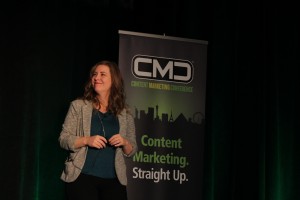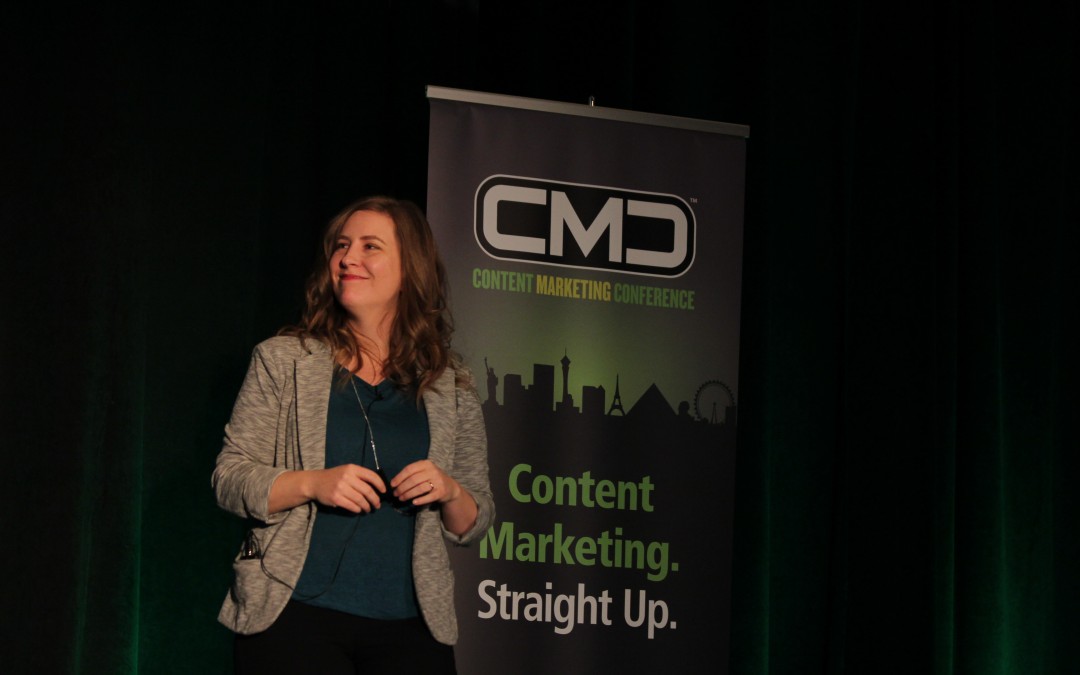Traditional content marketing takes a long time to plan and perform, especially when you involve many people from a company. You push all your content out at once, which gains a spike in customer views and engagement. Then, customer interest wanes and you’re back to square one to start the whole long process up again. How can this process be improved?
Andrea Fryrear, Content Marketer and Agile Marketing Evangelist at SurveyGizmo, and Jeff Julian, Chief Marketing Officer at Aji, showed how Agile marketing changes all that with numerous quick efforts that sustain customer interest over the long run in their presentation at the 2016 Content Marketing Conference “Beyond Agile Marketing Theory: Real Life Ways to Make Agile Work on Your Team.”
Quicker Content Marketing
How important is content marketing in gaining customers for your business?
- 63 percent of readers are more likely to be influenced by blogs than by any other content.
- Business-to-business companies that blog generate 67 percent more leads than those who don’t.
- 68 percent of consumers check out companies on social media before buying.
- 57 percent of marketers acquired new customers with their blogs.
These numbers come from such sources as Social Media Today, Content Marketing Institute, and Brandpoint as compiled by Andrea Fryrear, Content Strategist at Survey Gizmo & Marketer Gizmo, and Jeff Julian, CMO, Aji Software. They want you to maximize the power of these stats with a practical agile marketing program that involves choosing a pilot program and running a sprint.
1. Choosing a pilot program.
You can prove that your agile approach works by carefully choosing a pilot program, or low-risk experiment, that is short-term, makes an impact, and is repeatable. Programs that meet all three criteria include the following:

Jeff Julian explains agile marketing to the audience at CMC 2016.
Social Media Pilots:
Rather than trying to get to the top of the social media pyramid right away, you can try an individual post or tweet to discover if it is effective. You can then change each message slightly, such as by adding a link or video, to see how that changes results.
To reach 1,000 people, social media programs can cost as little as $0.25 for Facebook ads and $0.75 for LinkedIn Ads, compared to $32 for a newspaper ad, $7 for cable TV, and $2.75 for a Google Ad.
Social media pilots take just a few days to implement and are instantly measurable, such as through the number of click-throughs or how many people become leads.
Email Pilots
Email pilots are easy to run and easy to test. Send one batch out as your control, and then send other batches where you change the subject line or body, or add a graphic or video. The risk is low and the cost is next to nothing. You can then measure the open rate and the click rate to determine your return-on-investment.
According to the Direct Marketing Association, the ROI on email averages $28.50 for email compared to $7 for direct mail. Email marketing returns an average 4,300 percent on investment for US businesses as of July 2015.
The only disadvantage is potentially overwhelming recipients with too much email. They then end up putting you on their spam block list.
Content Marketing Pilots
Content marketing pilots typically take at least take 20 months, which is longer than the two to four weeks recommended for agile testing. You need the time to build up enough viewers to produce measurable data. It’s also more difficult to measure quality, which is subjective, so focus on quantifiable metrics, such as time spent on the page.
When you first start a content marketing program, it takes about 20 months before you develop nine leads per $1,000 invested, which equals the ROI from paid search terms. However, the longer you stick with content marketing, the better the ROI, since you no longer have to pay rent to the media. At 36 months, you get 31 leads per $1,000 compared to the same 9 leads per $1,000 for paid searches.
Content marketing risks are also low with costs that are from 31 to 41 percent less than paid searches. The payoff can be quite substantial : about 100,000+ visits a month after five years.

Andrea Fryrear presented Beyond Agile Marketing Theory: Real-life Ways to Make Agile Work on Your Team with Jeff Julian at CMC 2016.
2. Running a sprint.
In agile marketing, a sprint is a project or test-run that lasts from two to four weeks. It starts with a list of content items that you want to produce. Each item on the list has a title, content, value measurement, and time estimate. You then pick one of these items and perform the following steps.
- Gather resources. Who is on the team? What skills do they have? When can they participate? Where are they assigned? Why should they join? How good are they?
- Determine duration. Consider what you have to deliver, the size of the delivery, and what the audience wants to determine the optimal time for the sprint.
- Select your content. What content has the highest priority and what needs to go first? Who is pushing your team and what can they accomplish? What did you neglect?
- Establish tasks. Break down what you need to do into manageable tasks. For example, to create an online article, you need to create a draft, have it reviewed by peers, finalize the content, develop images, publish the article to a site, and finally, create a social campaign for it.
- Work, report, and repeat. Create a tracking board with three columns marked Open, In Process, and Complete. This board can consist of little more than a white board with each task written on a sticky note that you can easily move from column to column. More sophisticated trackers are also available, such as a large touch screen, or agile-specific tools such as Trello and JIRA.
Each task starts inside the Open column, moves to the In Process column when you work on the task, and then ends in the Complete column when you finish the task.
When you’ve completed all the tasks, you’ve officially finished the sprint. Examine the content with the other people who have a stake in it, such as your boss or salespeople. Demonstrate the value your content has. Don’t forget to celebrate your achievement.
Finally, measure how well the team did and whether the content was effective. Figure out the ROI based on the time and resources spent versus the return. Then repeat the process with the next content item.

